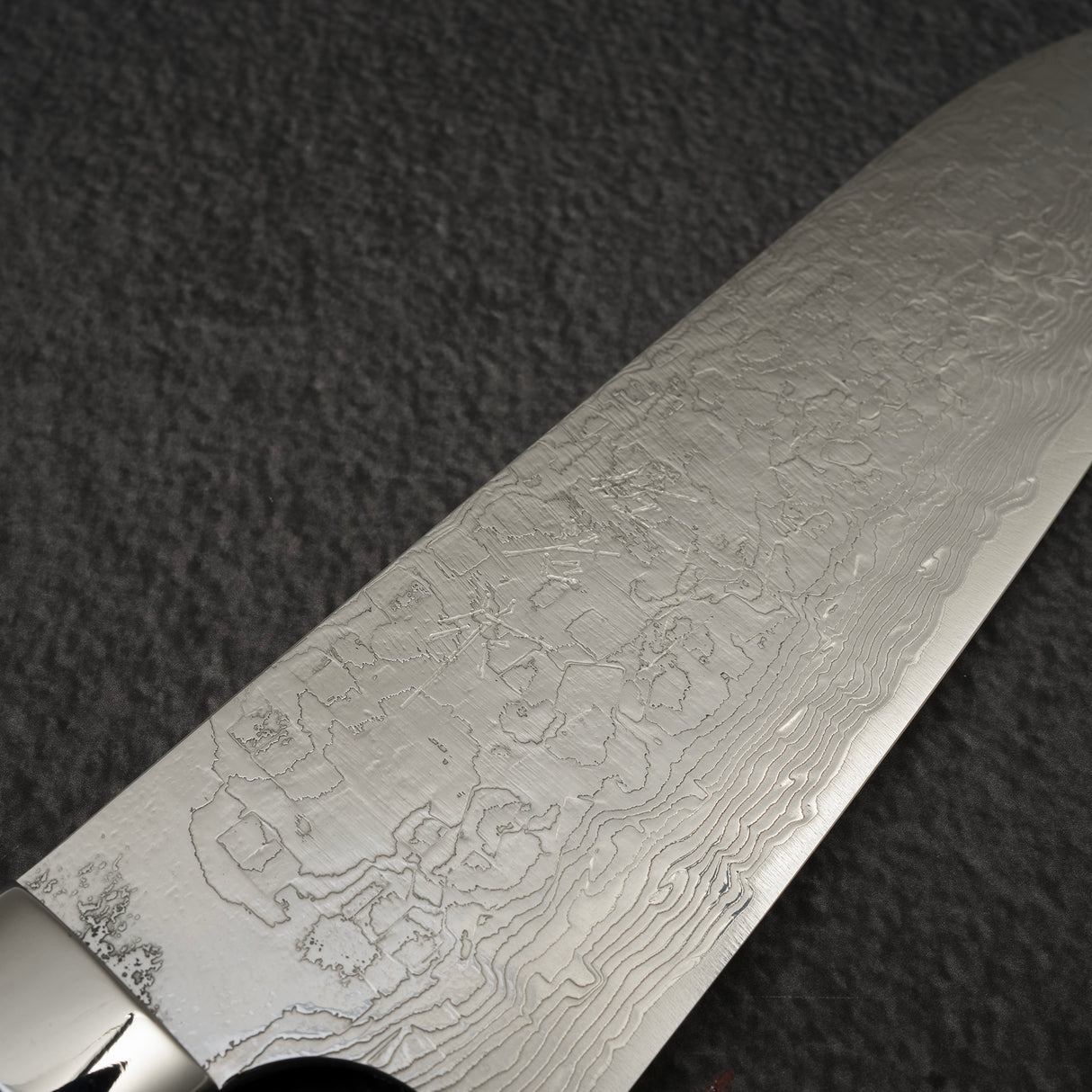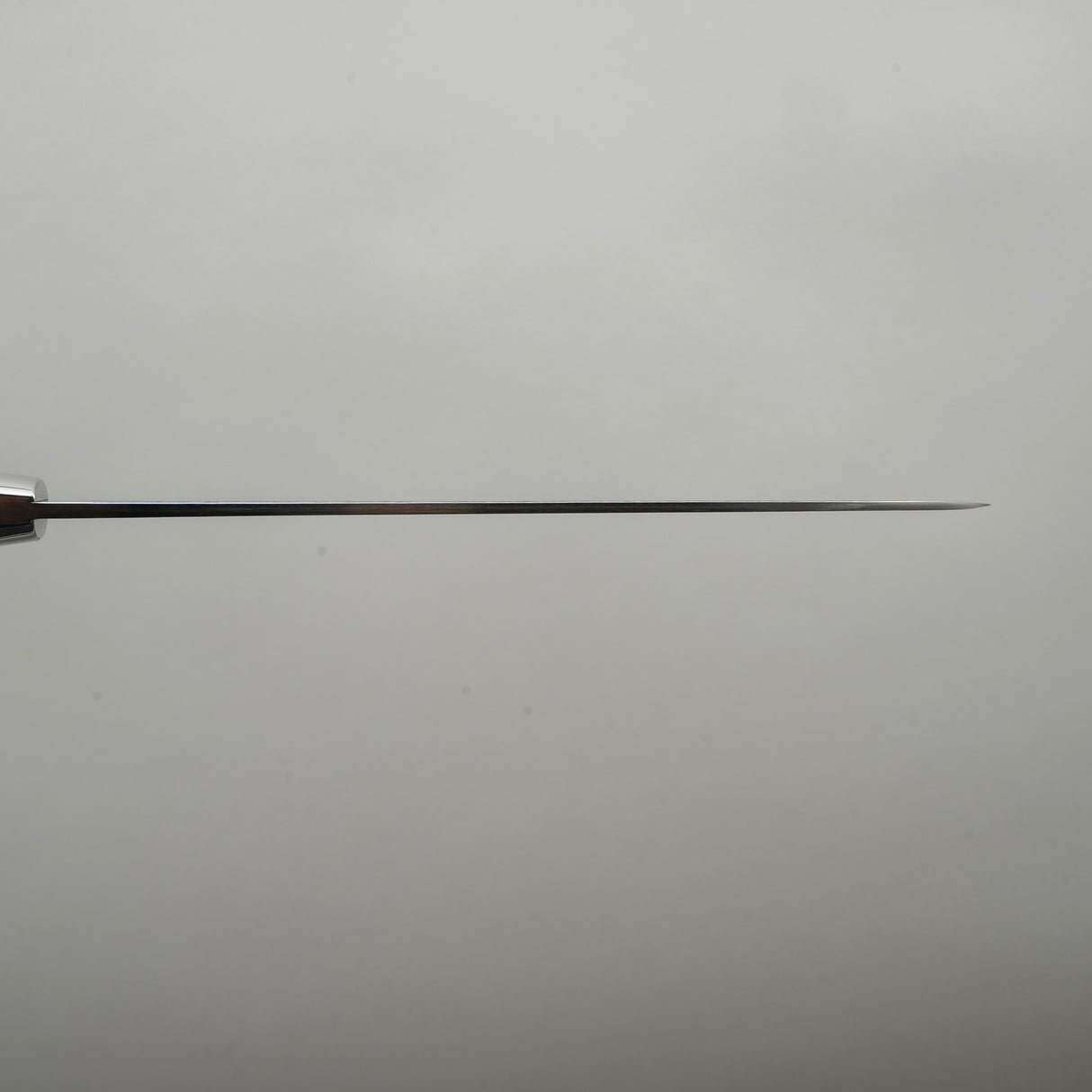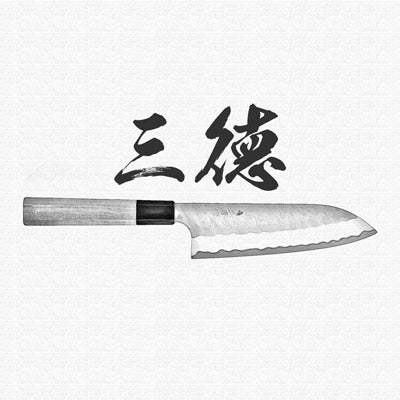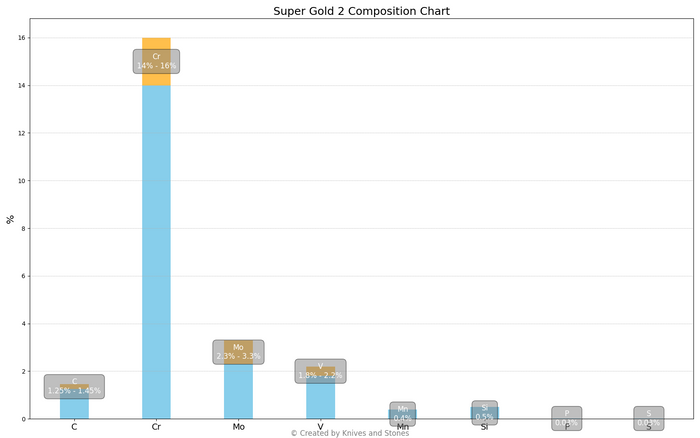Takeshi Saji | SKU:
TAKE_SGDA_SA180_IRWD
Takeshi Saji Diamond Damascus R2 Santoku 180mm with Ironwood Handle
Sale price
$577.98
Regular price
$679.95
Unit price
/
Unavailable
Takeshi Saji Diamond Damascus R2 Santoku 180mm with Ironwood Handle is backordered and will ship as soon as it is back in stock.
Couldn't load pickup availability
Detailed Specifications
| Line | Saji SG2 Diamond Damascus |
| Profile | Santoku |
| Bevel Type | Double Bevel |
| Weight | 230 g | 8.1 oz |
| Edge Length | 179 mm | 7 3/64″ |
| Heel Height | 49 mm | 1 59/64″ |
| Width @ Spine | 2.6 mm | 7/64″ |
| Width @ Mid | 2.0 mm | 5/64″ |
| Width @ 1cm from Tip | 1.2 mm | 3/64″ |
| Steel | SG2 / R2 | Powdered | Stainless |
| Blade Construction | Sanmai - Stainless Clad |
| Hardness (HRC) | 62 - 64 |
| Surface Finish | Etched |
| Handle | Coke-bottle Shaped Western |
| Region | Takefu |
| Best for |
|

| Pros | Cons |
|
|
|
Care Instruction
- Don't cut hard things! Japanese knives are brittle so bone hacking is a NO NO!
- Wash with neutral detergent after use, and wipe dry;
- Please don't wash knife with dishwasher, it will damage the wood handle;
- Be careful not to leave the knife close to a heat source for a long time;
- It is a lot more dangerous to cut with a blunt knife than a sharp knife!
- It is best to sharpen a Japanese knife regularly on a waterstone.




























